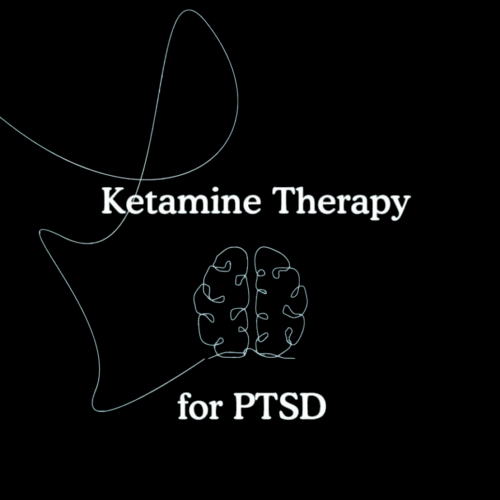Introduction
Relationships are meant to bring love, support, and security. However, some relationships create deep cycles of emotional pain and attachment that are difficult to escape. This phenomenon is known as trauma bonding, a psychological connection that forms between a victim and an abuser through repeated cycles of abuse and reconciliation.

Breaking free from trauma bonds is extremely challenging, as the emotional pull often feels stronger than logic. This is where therapy for trauma bonding becomes essential. Therapy provides tools, strategies, and guidance to help individuals reclaim their freedom, rebuild their self-worth, and create healthier patterns of connection.
This article explores what trauma bonding is, why it happens, its effects on mental health, and the therapies and techniques that help break the cycle. It will also cover self-help practices, challenges in recovery, and how to rebuild trust and relationships after leaving a trauma bond.
Understanding Trauma Bonding
What Is Trauma Bonding?
Trauma bonding is a powerful emotional attachment that develops between a person and someone who mistreats them. This bond forms because of intermittent reinforcement—a cycle of affection followed by abuse. The victim begins to associate love with pain, making it incredibly difficult to leave.
Common Patterns in Trauma Bonds
- Periods of abuse followed by apologies and affection.
- Constant hope that the abuser will change.
- Feeling unable to leave despite ongoing harm.
- Confusion between love and control.
Signs You May Be in a Trauma Bond
- Defending the abuser’s behavior.
- Feeling guilty or ashamed for wanting to leave.
- Believing you cannot survive without the abuser.
- Emotional dependence even when unhappy.
Why Trauma Bonding Happens
Intermittent Reinforcement
Abusers often alternate between kindness and cruelty. This unpredictability keeps victims emotionally hooked, always hoping for the “good” version of their partner.
Emotional Manipulation and Control
Gaslighting, guilt-tripping, and fear-based tactics weaken self-confidence and increase dependency.
Childhood Experiences and Attachment Styles
Those with insecure attachment patterns may unconsciously repeat toxic dynamics from early life.
The Brain’s Chemistry
Trauma bonds are strengthened by chemicals like oxytocin and dopamine released during both affection and stress. This creates an addictive cycle.
Impact of Trauma Bonding on Mental Health
Being trapped in a trauma bond takes a heavy toll on mental and emotional well-being.

- Anxiety and Depression: The constant cycle of fear and hope destabilizes emotions.
- Low Self-Esteem: Victims often internalize blame and feel unworthy.
- Fear of Leaving: Even when unhappy, victims may feel paralyzed at the thought of separation.
- Identity Confusion: Prolonged abuse can distort one’s sense of self and personal boundaries.
Therapy for Trauma Bonding: An Overview
Therapy provides a safe and structured space to untangle the confusion of trauma bonding. With professional guidance, individuals can:
- Understand why the bond formed.
- Break free from patterns of abuse.
- Heal emotional wounds.
- Rebuild self-worth and independence.
Short-Term Goals of Therapy
- Safety planning and emotional stabilization.
- Recognizing toxic patterns.
- Building awareness of self-worth.
Long-Term Goals of Therapy
- Healing unresolved trauma.
- Creating healthy relationships.
- Sustaining emotional resilience.
Types of Therapy for Trauma Bonding
1. Cognitive Behavioral Therapy (CBT)
CBT helps identify and challenge distorted thought patterns that keep victims trapped in trauma bonds.
- Recognizing unhealthy beliefs (“I don’t deserve better”).
- Replacing them with empowering thoughts.
- Building problem-solving skills.
2. Dialectical Behavior Therapy (DBT)
DBT focuses on regulating intense emotions and creating healthy boundaries.
- Mindfulness practices.
- Distress tolerance techniques.
- Skills for emotional resilience.
3. Trauma-Focused Therapy
Addresses the root trauma that makes individuals vulnerable to toxic relationships.
- Exploring childhood experiences.
- Processing unresolved pain.
- Releasing emotional triggers.
4. Eye Movement Desensitization and Reprocessing (EMDR)
EMDR reduces the emotional intensity of traumatic memories.
- Allows victims to reprocess abuse experiences.
- Weakens the emotional grip of past trauma.
5. Group Therapy
Connecting with others who have experienced trauma bonding creates validation and support.
- Sharing experiences.
- Learning coping strategies.
- Feeling less alone.
6. Somatic Therapy
Trauma often lives in the body. Somatic therapy uses movement, breathwork, and awareness to release stored tension.
Therapeutic Techniques for Healing Trauma Bonds
- Identifying Distorted Beliefs: Challenging false ideas like “This is the best I can get.”
- Self-Worth Building: Learning to value oneself outside of toxic attachments.
- Boundary Training: Practicing how to say no and protect personal space.
- Mindfulness Practices: Staying grounded in the present rather than repeating past patterns.
- Visualization Exercises: Imagining life free from trauma bonds to create motivation.
Steps to Break Free from Trauma Bonds
- Recognize the Pattern: Awareness is the first step toward change.
- Create a Safety Plan: Prioritize emotional and physical safety.
- Seek Professional Support: Therapy accelerates healing.
- Establish No Contact: Reducing or cutting contact prevents relapse.
- Rebuild Identity: Explore hobbies, passions, and goals.
Self-Help Practices to Support Therapy
Journaling for Reflection
Writing helps process emotions and track healing progress.
Affirmations for Empowerment
Daily affirmations like “I am worthy of healthy love” reinforce self-belief.
Meditation and Breathing Exercises
Calms the nervous system and reduces anxiety.
Healthy Lifestyle Habits
- Balanced diet.
- Consistent sleep.
- Regular physical activity.
Challenges in Healing from Trauma Bonding
- Emotional Withdrawal: Similar to addiction, separation can feel painful.
- Fear of Loneliness: Many victims struggle with being alone.
- Guilt and Shame: Abusers often instill self-blame.
- Risk of Relapse: Returning to toxic relationships is common.
Recovery Journey: What to Expect
Healing is not linear. Expect progress mixed with setbacks.
Early Phase
- Intense emotions.
- Cravings for the toxic relationship.
Middle Phase
- Greater self-awareness.
- Building coping strategies.
Long-Term Phase
- Stronger self-identity.
- Ability to form healthier relationships.
How to Build Healthy Relationships After Trauma Bonding
- Learning to Trust Again: Gradually allowing safe people into your life.
- Recognizing Red Flags: Spotting early signs of manipulation.
- Practicing Vulnerability: Opening up at a comfortable pace.
- Cultivating Supportive Bonds: Surrounding yourself with positive influences.
Role of Support Systems in Recovery
Family and Friends
Supportive loved ones can provide encouragement and accountability.
Peer Support
Connecting with others who have been through similar experiences creates shared healing.
Accountability Practices
Regular check-ins help prevent slipping back into old patterns.
Long-Term Healing and Growth
- Developing Resilience: Learning to face challenges without falling back into toxic bonds.
- Embracing New Identity: Defining life beyond past trauma.
- Living with Balance: Prioritizing peace, clarity, and emotional freedom.
Conclusion
Therapy for trauma bonding is a journey of rediscovering your worth, healing past wounds, and reclaiming your freedom. While the bond between victim and abuser can feel unbreakable, therapy provides the guidance, tools, and support to dismantle it.
Breaking free is not about erasing the past but about transforming pain into growth. With the right therapy, supportive practices, and resilience, you can rebuild a life filled with clarity, strength, and healthy love.



